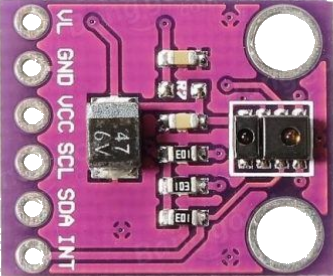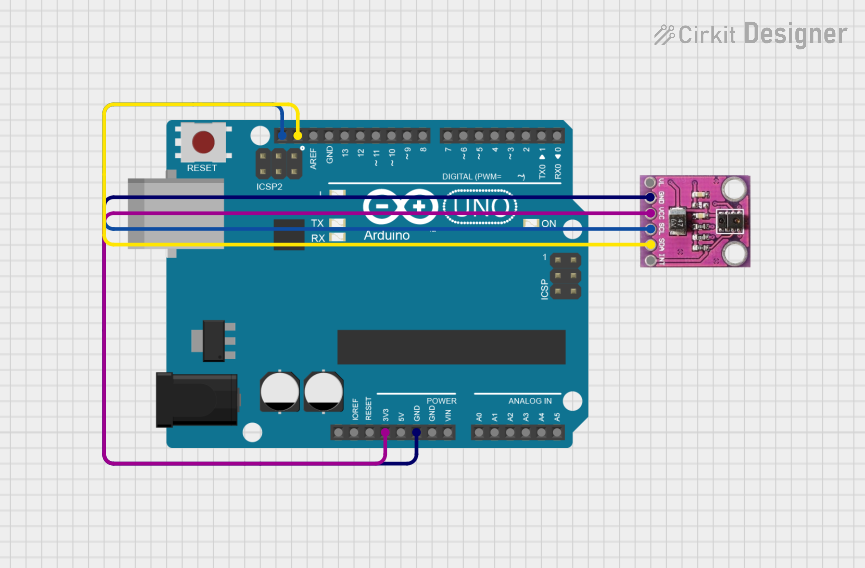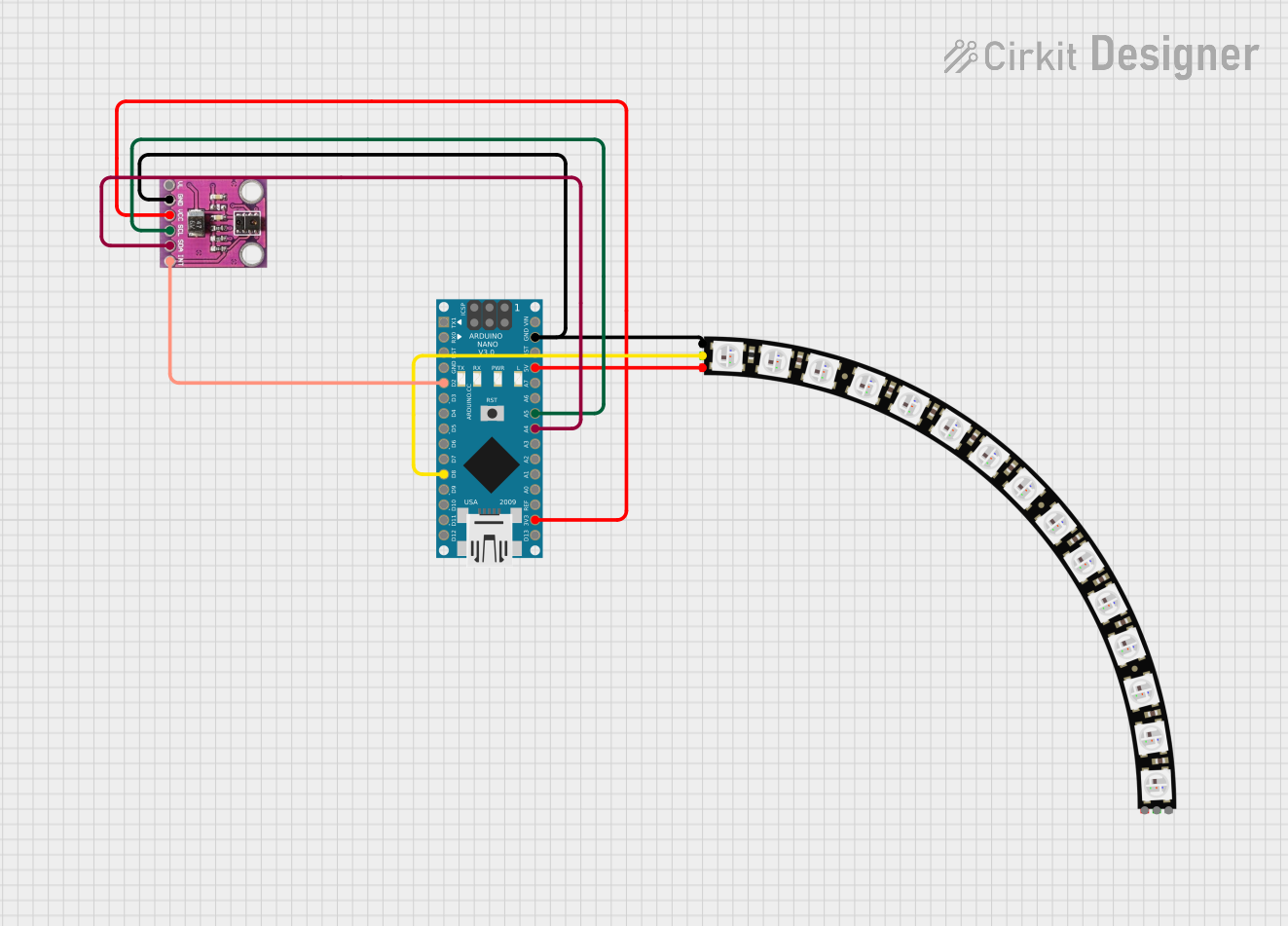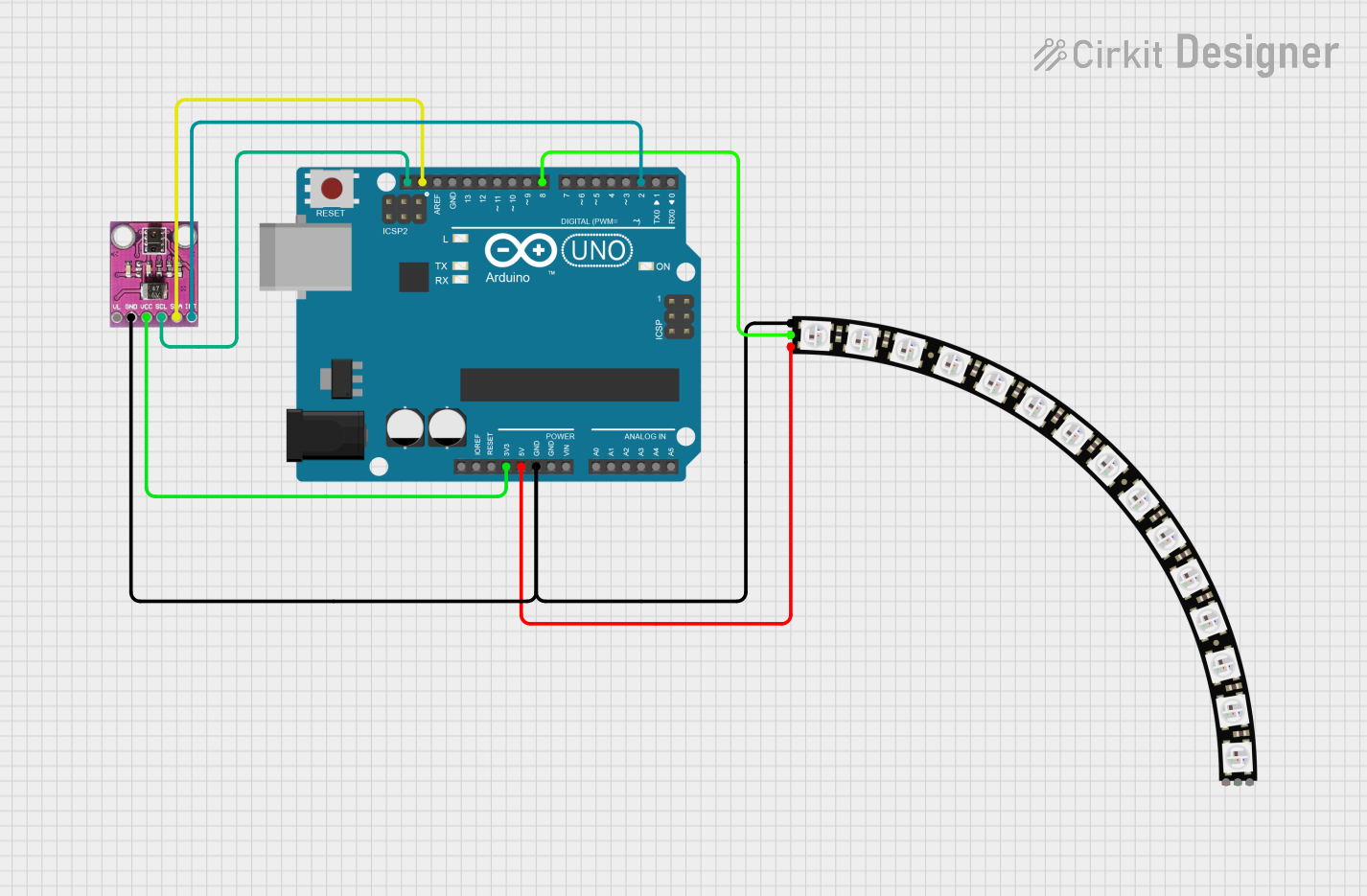
How to Use APDS-9930 Proximity and Ambient Light Sensor: Examples, Pinouts, and Specs

 Design with APDS-9930 Proximity and Ambient Light Sensor in Cirkit Designer
Design with APDS-9930 Proximity and Ambient Light Sensor in Cirkit DesignerIntroduction
The APDS-9930 is a versatile sensor module that integrates both ambient light sensing (ALS) and proximity detection into a single compact package. This sensor is widely used in mobile devices, smart home automation, and various other applications where it is necessary to measure the intensity of ambient light or detect the presence of an object nearby. Its ability to adjust screen brightness based on environmental light conditions and to enable touchless gesture controls makes it a popular choice for enhancing user experience in consumer electronics.
Explore Projects Built with APDS-9930 Proximity and Ambient Light Sensor

 Open Project in Cirkit Designer
Open Project in Cirkit Designer
 Open Project in Cirkit Designer
Open Project in Cirkit Designer
 Open Project in Cirkit Designer
Open Project in Cirkit Designer
 Open Project in Cirkit Designer
Open Project in Cirkit DesignerExplore Projects Built with APDS-9930 Proximity and Ambient Light Sensor

 Open Project in Cirkit Designer
Open Project in Cirkit Designer
 Open Project in Cirkit Designer
Open Project in Cirkit Designer
 Open Project in Cirkit Designer
Open Project in Cirkit Designer
 Open Project in Cirkit Designer
Open Project in Cirkit DesignerTechnical Specifications
Key Features
- Ambient Light Sensing (ALS) for display backlight control
- Proximity detection for touchless object sensing
- Programmable interrupt function with upper and lower thresholds
- I2C interface for easy communication with microcontrollers
- Operating voltage: 2.4V to 3.6V
- Proximity detection range: Up to 100 mm
- Ambient light sensing range: 0.01 lux to 65535 lux
- Low power consumption
Pin Configuration and Descriptions
| Pin Number | Name | Description |
|---|---|---|
| 1 | VDD | Power supply (2.4V to 3.6V) |
| 2 | GND | Ground connection |
| 3 | SCL | I2C clock line |
| 4 | SDA | I2C data line |
| 5 | INT | Interrupt output (active low) |
| 6 | VL | Optional IR LED power supply for proximity sensor |
Usage Instructions
Integration with a Circuit
To use the APDS-9930 in a circuit, connect the VDD pin to a power supply within the specified voltage range and the GND pin to the ground. The SCL and SDA pins should be connected to the corresponding I2C clock and data lines on a microcontroller, such as an Arduino UNO. If the proximity detection feature is used, an external IR LED can be powered through the VL pin.
Best Practices
- Ensure that the power supply is stable and within the specified voltage range.
- Place the sensor away from direct light sources to avoid false readings.
- Use pull-up resistors on the I2C lines if they are not provided internally by the microcontroller.
- Avoid placing objects too close to the sensor during ambient light measurement.
Example Code for Arduino UNO
#include <Wire.h>
#include <SparkFun_APDS9960.h> // Include the APDS-9960 library
// Instantiate an APDS-9960 object
SparkFun_APDS9960 apds = SparkFun_APDS9960();
void setup() {
Serial.begin(9600);
Wire.begin();
// Initialize APDS-9930 (configure I2C and initial values)
if (apds.init()) {
Serial.println("APDS-9930 initialization complete");
} else {
Serial.println("Something went wrong during APDS-9930 init!");
}
// Adjust the Proximity sensor gain
if (apds.setProximityGain(PGAIN_2X)) {
Serial.println("Proximity gain set to 2X");
}
// Start running the APDS-9930 proximity sensor (no interrupts)
if (apds.enableProximitySensor(false)) {
Serial.println("Proximity sensor is now running");
} else {
Serial.println("Something went wrong during sensor init!");
}
}
void loop() {
uint8_t proximity_data = 0;
// Read the proximity value
if (apds.readProximity(proximity_data)) {
Serial.print("Proximity: ");
Serial.println(proximity_data);
}
delay(250); // Wait for 250 milliseconds before next read
}
Troubleshooting and FAQs
Common Issues
- Sensor not responding: Ensure that the sensor is correctly powered and that the I2C connections are secure. Check for proper pull-up resistors on the I2C lines.
- Inaccurate readings: Verify that the sensor is not exposed to direct light or obstructed by nearby objects. Adjust the gain settings if necessary.
- Intermittent readings: Check for loose connections and ensure that the interrupt pin is not floating if not used.
FAQs
Q: Can the APDS-9930 be used outdoors? A: Yes, but direct sunlight may interfere with the ambient light readings. It's best to shield the sensor from direct light.
Q: How can I adjust the range of proximity detection? A: The range can be adjusted by changing the proximity sensor's gain settings through the provided library functions.
Q: What should I do if the sensor is not detected by the microcontroller? A: Check the wiring, ensure that the correct I2C address is used, and verify that the microcontroller's I2C interface is functioning properly.
Q: Is it necessary to use an external IR LED for proximity detection? A: The APDS-9930 has an integrated IR LED for proximity detection. The VL pin is optional and can be used to power an external IR LED if higher power is needed.
For further assistance, consult the APDS-9930 datasheet and the manufacturer's application notes.